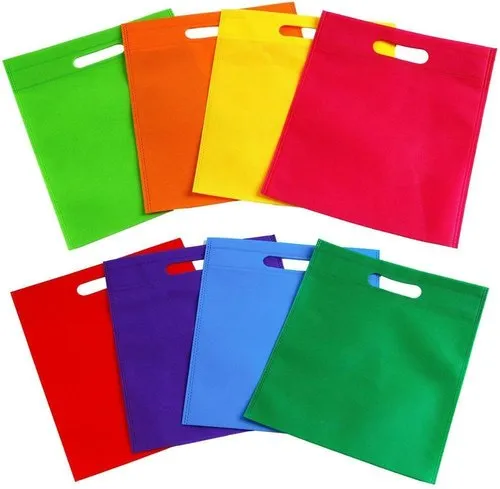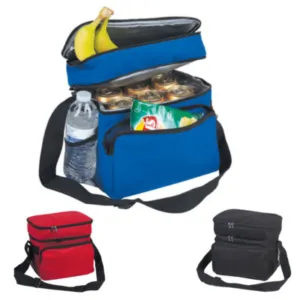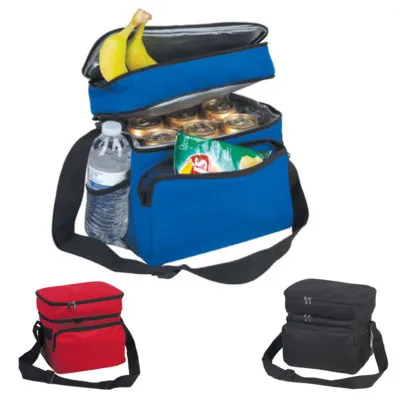When buying non-woven bags in bulk, it's essential to know how many bags make up 1 kilogram. Why is this important? Calculating this number helps you understand the cost, weight, and volume better. Let's explore how to figure it out.
To calculate the number of non-woven bags in 1kg, we must first understand the weight of a single bag, which can vary depending on its size, material, and design.
What is a Non-Woven Bag?
Non-woven bags are eco-friendly bags made from synthetic fibers1 that are bonded together using heat, chemicals, or pressure. These bags are commonly used for shopping, packaging, and promotional purposes due to their strength and versatility.
Non-woven bags are durable, lightweight, and highly customizable, making them a popular choice for both consumers and businesses.
Non-woven bags are different from traditional woven bags2 because they don't have threads or yarns woven together. Instead, they are made from fibers that are randomly bonded together. This method gives non-woven bags their unique texture and flexibility. These bags are also lightweight, making them easy to carry and cost-effective to manufacture. Non-woven bags come in various thicknesses, colors, and designs, which makes them suitable for a wide range of purposes, from grocery shopping to promotional giveaways.
Non-Woven Bag Features
| Feature | Description |
|---|---|
| Material | Synthetic fibers fused together |
| Durability | Strong but lightweight |
| Customization | Can be printed or dyed in various colors |
| Reusability | Eco-friendly and long-lasting |
| Cost | Affordable for bulk production |
How Many Non-Woven Bags Are in 1 Kg?
The number of non-woven bags in 1 kilogram depends on the weight of each bag3. A standard non-woven shopping bag typically weighs between 40 to 80 grams. This means that in 1 kilogram (1000 grams), you would have approximately:
- 12-25 bags of 40 grams each
- 10-20 bags of 50 grams each
- 7-12 bags of 80 grams each
The total number of bags in 1 kilogram depends on the size and weight of the individual bags, which can vary based on material and design.
Non-woven bags come in different sizes, and the weight can vary depending on the thickness of the fabric used. A small, thin non-woven bag4 used for lightweight items such as cosmetics might weigh 40 grams, while a larger bag used for carrying groceries could weigh up to 80 grams or more. To calculate the number of bags in a kilogram, it's essential to know the weight of the individual bag. If you are buying in bulk, knowing this number helps estimate shipping costs, inventory, and pricing more accurately.
Calculation Table for Non-Woven Bags in 1kg
| Bag Weight (grams) | Bags in 1 kg |
|---|---|
| 40 grams | 25 bags |
| 50 grams | 20 bags |
| 60 grams | 16 bags |
| 70 grams | 14 bags |
| 80 grams | 12 bags |
How to Calculate Non-Woven Bag Weight?
The weight of a non-woven bag is determined by its material, size, and design. Here's a simple method to calculate the weight of a single bag.
To calculate the weight of a non-woven bag, you need to know the material density, bag size, and any additional features (e.g., handles, zippers).
Start by measuring the area of the bag—this includes its length, width, and height if it's a three-dimensional bag. Multiply the dimensions to get the volume of the fabric. Then, determine the fabric's weight per unit area (e.g., grams per square meter). Finally, multiply the fabric's weight by the volume of the bag to get the total weight. For more accurate calculations, you can use weight scales or consult the supplier for detailed specifications of the bags you're purchasing.
Formula to Calculate Bag Weight
- Measure the bag's length, width, and height.
- Calculate the fabric area:
length x width. - Multiply by the fabric density (grams per square meter).
- Add the weight of any additional features (e.g., handles, zippers).
How Do You Calculate Packaging Weight?
Packaging weight5 is an essential factor when buying or selling non-woven bags in bulk. It's the weight of the entire package, including the bags and any packaging materials like boxes or plastic wraps.
Packaging weight can impact shipping costs, so it’s important to calculate it correctly.
To calculate packaging weight, first determine the number of bags in each package. Multiply the number of bags by the weight of each individual bag. Then, add the weight of the packaging materials, such as the box or plastic wrap. For example, if you have 500 bags weighing 50 grams each and a packaging box weighing 200 grams, the total packaging weight would be calculated as follows:
- Bags: 500 bags x 50 grams = 25,000 grams (25 kg)
- Packaging: 1 box x 200 grams = 0.2 kg
- Total weight = 25 kg + 0.2 kg = 25.2 kg
Packaging Weight Calculation Table
| Item | Weight per Unit | Total Weight for 500 Bags |
|---|---|---|
| Non-Woven Bags | 50 grams | 25,000 grams (25 kg) |
| Packaging Materials | 200 grams | 0.2 kg |
| Total Packaging Weight | 25.2 kg |
Conclusion
Calculating the number of non-woven bags in 1 kilogram helps with cost estimation and inventory management. Whether you're purchasing for your business or evaluating shipping costs, understanding the weight of non-woven bags is crucial. At JiaRong Packaging, we offer customizable and eco-friendly non-woven bags in various sizes and weights. Visit our website at JiaRong Packaging for more information and product options.
-
Learn about the types of synthetic fibers used in non-woven bags and the production methods involved. ↩
-
Understand the key differences between woven and non-woven bags in terms of their construction and uses. ↩
-
This explains the factors influencing bag weight, which is essential for bulk purchase decisions. ↩
-
This helps understand how bag weight impacts shipping costs and inventory management. ↩
-
This explains the common packaging materials, helping buyers understand what affects packaging weight. ↩












